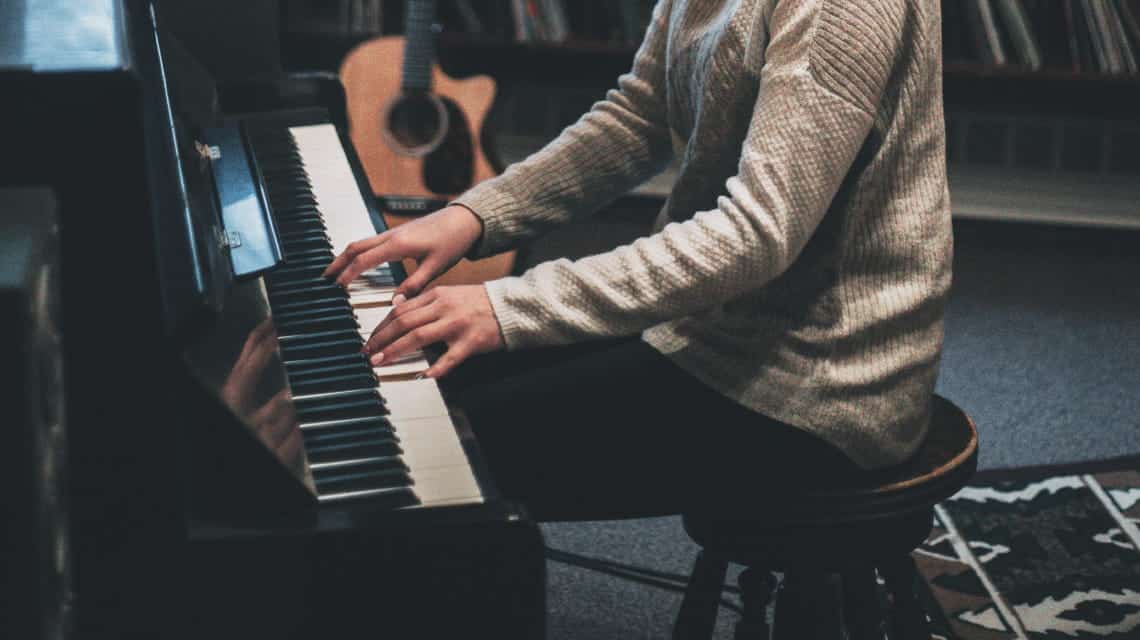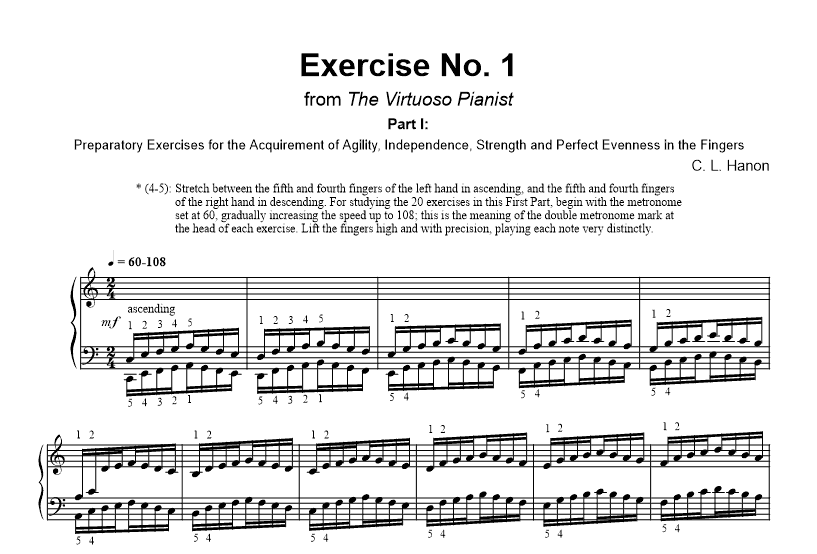5 Piano Warm-Ups That Will Help You Become a Better Pianist
Piano warm-ups can seem monotonous at times, but the benefits are invaluable!

Piano warm-ups can seem monotonous at times, but the benefits are invaluable. Warming up before getting into your piano lessons and performances can prevent serious injury, build up your finger strength, and improve your overall skill and fluency. We’ve put together a list of 5 piano warm-ups that will help you become a better pianist!
Before You Start…
Make sure you STRETCH. Check out our go-to routine: 10 Essential Stretches for Musicians, and take a few moments to loosen up your neck, shoulders, elbows, wrists, and fingers.

1. Hanon Exercises
Every pianist either has or will encounter Hanon Exercises at some point in their piano playing career. These exercises, titled The Virtuoso Pianist by Charles-Louis Hanon, is a compilation of sixty exercises meant to train the pianist in speed, precision, agility, and strength of all of the fingers and flexibility in the wrists.
- Exercises 1 – 20: Labeled “preparatory exercises”, these are also the most famous exercises, and are used to develop finger strength and independence. Each exercise contains a sequence of 8 sixteenth notes, beginning on a C, which is then repeated starting on D, and so on across two octaves. The exercise is then repeated in reverse down two octaves to the starting C. The exercises are intended to be practiced in groups of three, except for the first two which are practiced together.
- Exercises 21 – 43: Labeled “further exercises for the development of a virtuoso technique,” this more difficult section is meant to be played after the pianist has fully mastered Part 1. Part 2 includes scales and arpeggios.
- Exercises 44 – 60: Labeled “virtuoso exercises for mastering the greatest technical difficulties,” this section is considerably more difficult. Hanon recommends the mastery of both previous parts before proceeding to this one. This part includes repeated notes, repeated double notes, scales in thirds and octaves, tremolos, and more.
After all three parts are mastered, Hanon recommends all exercises be played through daily to retain technique.
2. Scales with Rhythm
Let’s face it–scales are unavoidable in piano warm-ups. However, there is no greater tool when it comes to familiarizing yourself with key signatures! You can change up the routine of your scales by experimenting with different rhythms as you play. For example, you may normally play a scale like this:

Change up the rhythm by playing a long-short or short-long pattern.

Long-Short

Short-Long
Playing your scales in different rhythms will take you out of your routine and cause your brain to start reengaging with the notes and finger patterns.
3. Improv!
If you’re not feeling the scales and drills routine, try a little improvisation! You’ll actually be using the same skills, as you’ll be having to pull melody lines from the scales and key signatures you know. Start with a chord progression, play through it a few times, and let your fingers do the rest! Channel your knowledge of the key signature you’re in, modes, pentatonic scales–whatever comes to mind. Spend 5 to 10 minutes doing this and you may just have a new song on your hands! Here are a few chord progressions to get you started:


4. Sightread A New Piece
Sightreading is a great exercise for pianists as it helps with hand-eye coordination, widening your musical diversity and knowledge of music theory. It can also be a really fun way to warm up because you’re tackling a piece you’ve never seen before! We recommend sightreading a piece that is slightly below your skill level so that your concentration is primarily on the page in front of you and not your hands. And don’t worry about playing perfectly. Run through the piece about 2 or 3 times until your fingers and wrists start to feel warm, and then move on to your practice!

5. Dig Out An Old Piece
It’s always fun to dig out pieces from the past, so why not use one for a warm up? Just make sure that your piece is long enough to sufficiently warm up your joints. Ideally, you will want to warm up for 5-10 minutes, so you could even play two or three pieces! Warming up with an old piece also promotes muscle memory so you’re sure to never forget it.
We hope these exercises have inspired you to get started with your piano warm-ups! And don’t forget to get all of your piano sheet music at Musicnotes.com.



